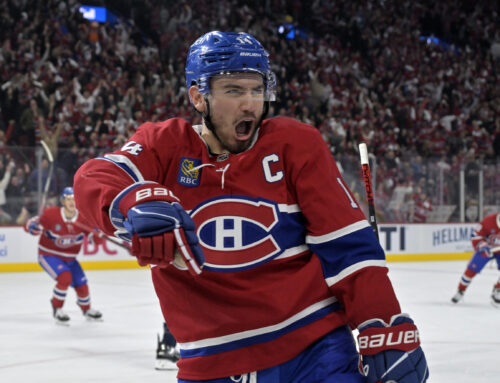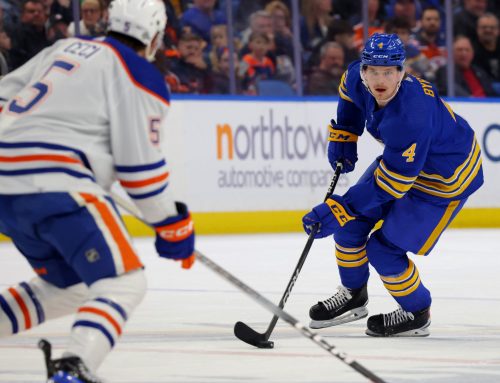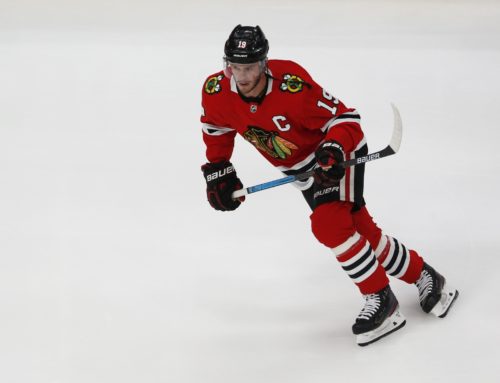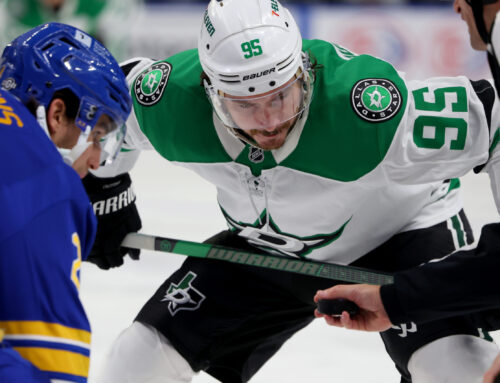Hopefully you like the new modern design of the Dobber Hockey website. As I was telling Dobber, I like how you can now see hot players and a sampling of line combinations on the home page. Once play resumes, you'll also be able to see upcoming games and starting goalie information, which will give you more reasons to hang out here.
Speaking of upcoming games, it seems as though we are one step closer to the NHL returning.
You've probably seen the potential matchups by now. You've probably also given some thought to who will win between, say, Montreal/Pittsburgh or Vancouver/Minnesota. I won't make any predictions today, since we still have hundreds of miles to travel before this gets the official go-ahead and the puck drops on the first matchup – assuming the fragile health situation allows. Yet since baseball is being played in South Korea and soccer is being played in Germany, there is growing hope that the proposed 24-team tournament can work in North America. But maybe you don’t like the number 24 for some reason.
I don't know about you, but I was focused more than anything on the Spanish subtitles the first time I saw that clip. Then it occurred to me that there's a Simpsons clip for pretty much everything in this world.
*
Here are the most popular Frozen Tools searches from the past week:
Some names are carryovers from previous weeks, which I've covered in what is now a weekly feature in the Ramblings. Included are Anthony Cirelli (here) and Alex DeBrincat (here). I also discussed Max Domi in my most recent Ramblings prior to now. So today it's three more forwards who I haven't seen on the top searches yet. I may not be able to tell you why these players have been more searched than others, but I'll try to describe what might be good to know about them.
Many contending fantasy hockey teams would have loaded up for a championship run by trading for a player or two. (Remember playing fantasy hockey? Seems like a lifetime ago.) In a keeper format, this type of trade may have involved giving up a prospect or two for an established player. I was in that boat, acquiring a few players for my keeper team, the most significant being Malkin.
There hadn't been a better time to own Malkin in years, as his 1.35 PTS/GP was his highest since (looks down his career stats) the 2011-12 season. Only five players have recorded a higher point-per-game total this season than Malkin. More recently, he'd been on an absolute tear, scoring 11 points (4g-7a) over his last five games with points in each of those five games. When healthy, the nearly-34-year-old Malkin can still score with the best of them.
Yet there's still that health question mark. Because Malkin is now on the wrong side of 30, that question isn't going to go away. Aside from the 78 games he suited up for in 2017-18, Malkin has missed at least 13 games each season since 2013-14. Assuming Malkin wasn't going to miss any more games this season, that averages out to 66 games played per season, even if you include the 2017-18 season. When forecasting Malkin's production, you'd need to subtract about 16 games missed. Any more games played than that average should be considered a bonus, not an expectation.
If Malkin were to play all of his remaining games at the season pace, he would have finished with around 90 points. It's not consistent production if you factor in all the injuries, but it's also not production that can be ignored. In a keeper format, it's difficult to bank on a player with his age and injury history over the long haul. As well, expecting 1.35 PTS/GP going forward is also a reach. Yet in a single-season format, he's a great player to gamble on if the cost isn't sky high.
My acquisition of Malkin bumped Reinhart down my center depth chart, perhaps to the point in which he became more of a spare part (my other centers were Aleksander Barkov, Mika Zibanejad, Brayden Schenn, and Eric Staal). Now before you say "I would easily play Reinhart over Staal and/or Schenn," remember that before the pause Reinhart had been held without a point in his last eight games. That definitely factors in when I make roster decisions of who to start or sit.
What happened over those eight games? Reinhart's Frozen Tools Player Calculator said that he still played an average of over 20 minutes over that span, including being on the ice for 70 percent of the Sabres' power-play minutes. On a Sabres' team that isn't overflowing with scoring options, Reinhart still spent over 70 percent of his even-strength minutes with leading scorer Jack Eichel. Yet Eichel himself crashed and burned over that span, recording just a single point (a goal in the final game) over his last eight games. The Sabres won just two of those last eight games, so team performance factored in.
Going forward, we can assume that Reinhart's success is tied to Eichel's. Reinhart played over 80 percent of his even-strength minutes with Eichel, and the two are also joined at the hip on the first-unit power play. As the Sabres rebuild, young players like Casey Mittelstadt and Dylan Cozens could give the Sabres more legitimate scoring options down the road for Reinhart should he be split from Eichel. Yet the way the Sabres are constructed now, Reinhart owners should hope that he sticks with Eichel.
Just as Reinhart stumbled before the pause, Strome was heating up with seven points over his last eight games. Yet over the entire season, Strome's production fell from 0.73 PTS/GP to 0.66 PTS/GP. Include just his time with the Blackhawks after the trade from Arizona, and that production fell from 0.87 PTS/GP to 0.66 PTS/GP.
As Dobber suggested in his bounce back list, Strome fell victim to a sophomore slump with more difficult matchups. Yet like Reinhart, this is another case of linemates affecting one another. Strome lined up with former junior teammate Alex DeBrincat for over half of both his even-strength and power-play minutes. Those two forwards have formed solid chemistry in both the OHL and the NHL. Yet as DeBrincat slumped (0.93 PTS/GP to 0.64 PTS/GP), so did Strome. By the way, DeBrincat also upped his game before the pause, recording five points over his last four games.
In terms of multicategory leagues, one thing that Strome doesn't have going for him is contributions in peripheral categories such as penalty minutes and hits. There is room for growth in power-play points. In terms of shots, though, he simply doesn't put up the shot volume of frequent linemates DeBrincat and Patrick Kane. Strome took just 97 shots in 58 games this season and 145 shots in 78 games last season, which in both cases is less than two shots per game. So if the scoring isn't there, Strome might not provide much else to your multicategory fantasy team.
*
For more fantasy hockey information, or to reach out to me, you can follow me on Twitter @Ian_Gooding.





 BUF
BUF NYR
NYR CHI
CHI WSH
WSH CBJ
CBJ S.J
S.J VAN
VAN PIT
PIT ANA
ANA L.A
L.A
